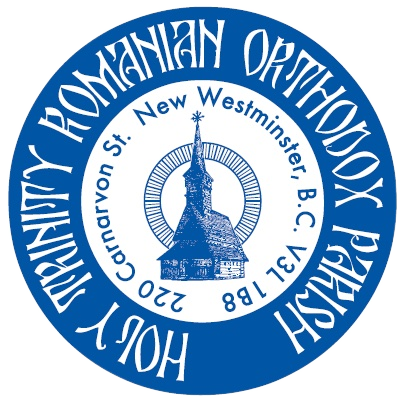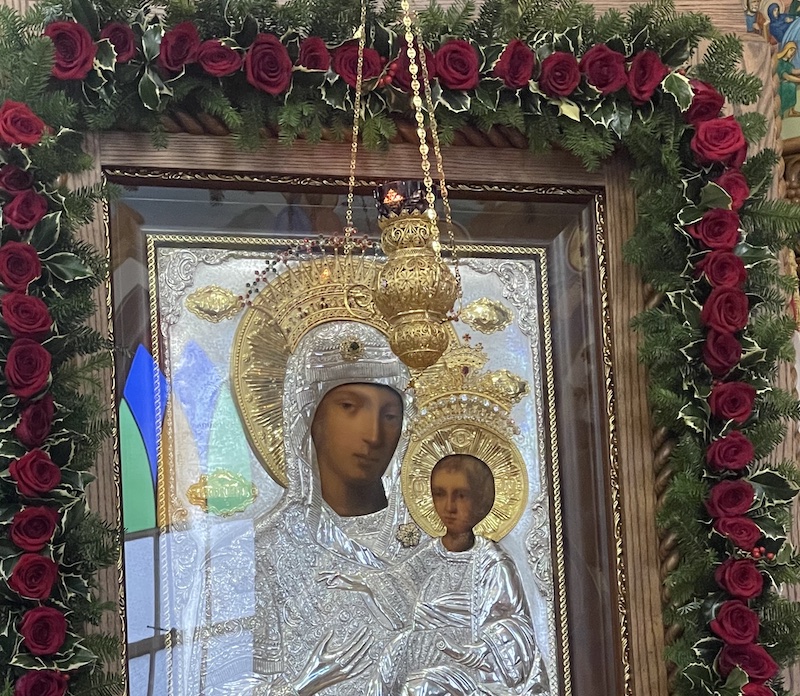ORTHODOX CHRISTIANITY
Orthodox Christianity is based on the belief that God is the Lord of all and has revealed Himself to mankind. His fullest revelation came t through the birth, life, death, and resurrection of His only-begotten Son, Jesus Christ.
God continues to reveal Himself to mankind through His Church. The sources of the Church’s faith in Christ are found in Holy Scripture and Holy Tradition.
HOLY SCRIPTURE
The Old and New Testaments are the written record of God’s revelation. The Old Testament relates the events leading to the birth of Christ, while the New Testament fulfills God’s revelation through Gospels and the writings of the early Church known as the Epistles. The Scriptures are the word of God, proclaiming that Jesus – as God and man – is the Christ and Savior. The Scriptures are the foremost product of HOLY TRADITION. That which is “passed on” or “given over” within the Church from the time of Christ down to the present day is known as Holy Tradition. It is the ongoing life of God’s people, and is composed of those things which are essential to God’s revelation. Among the other elements of Holy Tradition are worship and prayer, the creeds and acts of the early Church’s councils, the writings of the Holy Fathers, the lives of the saints, and the artistic and musical tradition of the Church.
THE CREED
The NICENE-CONSTANTINOPOLITAN CREED, composed in the fourth century as a summary of the Orthodox Christian faith, clearly expresses our faith in the Holy Trinity. Orthodox Christians have always professed this Creed.
THE HOLY TRINITY
Orthodox Christians believe that there are three distinct persons in One God.
GOD THE FATHER is the creator of all things. He is infinite, perfect, all-powerful, all-loving and all-knowing. Because of His great love for mankind, the Father sent GOD THE SON, Jesus Christ, into the world to redeem all creation which had been separated from God through sin. Christ is the only-begotten Son of God, the Savior of all and the fullest revelation of God the Father. He became man, while remaining divine, in order to save mankind and lead us into God’s eternal Kingdom. GOD THE HOLY SPIRIT is the sanctifier, inspirer and comforter. He proceeds from the Father, and was sent into the world after Christ’s ascension to dwell within us and sustain us.
SALVATION for the Orthodox Christian is a life-long process of building a closer relationship with God. Salvation…
- ends our separation from God, enabling us to begin a new life according to God’s will;
- is made possible for us by the death and resurrection of Christ;
- is ultimately attained through faith and living a life style modeled after Christ’s.
SALVATION for the Orthodox Christian is a life-long process of building a closer relationship with God. Salvation…
- ends our separation from God, enabling us to begin a new life according to God’s will;
- is made possible for us by the death and resurrection of Christ;
- is ultimately attained through faith and living a life style modeled after Christ’s.
THE CHURCH
THE CHURCH is made up of God’s people. Jesus Christ is the head of the Church. The Church is…
- One, because it is one body with one head, Jesus Christ. It cannot be divided or separated because Christ cannot be divided or separated;
- Holy, because the Holy Spirit dwells in it and its members, inasmuch as they respond to God’s call to salvation;
- Catholic, because it is whole, complete, lacking in nothing and universal;
- Apostolic, because it continues in the apostle’s teaching and experience. The Church fulfills the same mission as the apostles, namely to bring the good news of Christ to all mankind.
WORSHIP
WORSHIP is the common action of all Christians. By worshiping God, we come into closer union with Him.
Private prayer reflects our personal love and devotion for God, and is complimented by public worship, the communal proclamation that God is the Lord who continually reveals Himself to His people. The public worship of the Church revolves around…
- the DIVINE LITURGY, the main form of Orthodox worship, during which we not only praise God but also enter into His Kingdom through the reception of the greatest sacrament, Holy Communion.
- the LITURGICAL CYCLES involving the yearly feasts and fasts, the daily services, such as Vespers, Matins and Compline, and various other rites and services for a number of occasions and needs; and
- the SACRAMENTS, through which we allow God to enter our lives as we become members of His Church through Baptism and Chrismation, partake of His Holy Body and Blood in Holy Communion, receive His forgiveness through Confession and Penance, share His love through Marriage, dedicate our lives and work to Him through Ordination, and receive His healing grace through Holy Unction.
THE ORTHODOX CHURCH, then, is the continuation of the saving work of Our Lord and Savior, Jesus Christ, who still reveals Himself to His people through the Church.
TODAY, FROM YESTERDAY...
An ever-growing number of people from various backgrounds are becoming interested in the Orthodox Church. These individuals are discovering the ancient faith and rich traditions of the Orthodox Church. They have been attracted by its mystical vision of God and His Kingdom, by the beauty of her worship, by the purity of her Christian faith, and by her continuity with the past. These are only some of the treasures of the Church which has a history reaching back to the time of the Apostles.
The Orthodox Church in this country owes its origin to the devotion of so many immigrants from lands such as Greece, Russia, the Middle East, and the Eastern European nations of Romania, Serbia, Bulgaria and others. In the great wave of immigrations in the 19th and 20th centuries, Orthodox Christians from many lands and cultures came to America in search of freedom and opportunity. Like the first Apostles, they carried with them a precious heritage and gift. To the New World they brought the ancient faith of the Orthodox Church.
Many Orthodox Christians in America proudly trace their ancestry to the lands and cultures of Europe and Asia, but the Orthodox Church in the Canada and United States can no longer be seen as only an immigrant Church. While the Orthodox Church in the United States and Canada contains individuals from numerous ethnic and cultural backgrounds, the majority of her membership is composed of persons who have been born on this continent. In recognition of this, Orthodoxy has been formally acknowledged as one of the Four Major Faiths in the United States. Following the practice of the Early Church, Orthodoxy treasures the various cultures of its people; but it is not bound to any particular culture or people. The Orthodox Church welcomes all!
Today, there is an estimated of over half of milion Orthodox Christians in Canada and nearly 7 million Orthodox Christians in the United States. They are grouped into nearly a dozen ecclesiastical jurisdictions.
The Orthodox Church embodies and expresses the rich spiritual treasures of Eastern Christianity. It should not be forgotten that the Gospel of Christ was first preached and the first Christian communities were established in the lands surrounding the Mediterranean Sea. It was in these eastern regions of the old Roman Empire that the Christian faith matured in its struggle against paganism and heresy. There, the great Fathers lived and taught. It was in the cities of the East that the fundamentals of our faith were proclaimed at the Seven Ecumenical Councils.
The spirit of Christianity which was nurtured in the East had a particular flavor. It was distinct, though not necessarily opposed, to that which developed in the Western portion of the Roman Empire and subsequent Medieval Kingdoms in the West. While Christianity in the West developed in lands which knew the legal and moral philosophy of Ancient Rome, Eastern Christianity developed in lands which knew the Semitic and Hellenistic cultures. While the West was concerned with the Passion of Christ and the sin of man, the East emphasized the Resurrection of Christ and the deification of man. While the West leaned toward a legalistic view of religion, the East espoused a more mystical theology. Since the Early Church was non monolithic, the two great traditions existed together for more than a thousand years until the Great Schism divided the Church. Today, Roman Catholics and Protestants and heirs to the Western tradition, and the Orthodox are heirs to the Eastern tradition.
Christians of the Eastern Churches call themselves Orthodox. This description comes to us from the fifth century and has two meanings which are closely related. The first definition means true teaching/belief. The Orthodox Church believes that she has maintained and handed down the Christian faith, free from error and distortion, from the day of Pentecost and the Apostles. The second definition, which is actually the more preferred, means true praise. To bless, praise and glorify God Father, Son and Holy Spirit – is the fundamental purpose of the Church. All her activities, even her doctrinal formulations, are directed toward this goal.
Occasionally, the word ‘Catholic’ is also used to describe the Orthodox Church. This description dating back to the second century, is embodied in the Nicene Creed which acknowledges One, Holy, Catholic, and Apostolic Church. From the Orthodox perspective, Catholic means that the Church is universal and also that she includes persons of all races and cultures. It also affirms that the Church has preserved the fullness of the Christian Faith.
It is not unusual for titles such as Greek, Russian, Romanian, Antiochian, etc to be used in describing Orthodox Churches. These appellations refer to the cultural or national roots of a particular parish, diocese, etc.
UNITY IN DIVERSITY
The Orthodox Church is an international federation of patriarchal, autocephalous and autonomous churches. Each church is independent in her internal organization and follows her own particular customs. However, all the churches are united in the same faith and order.

